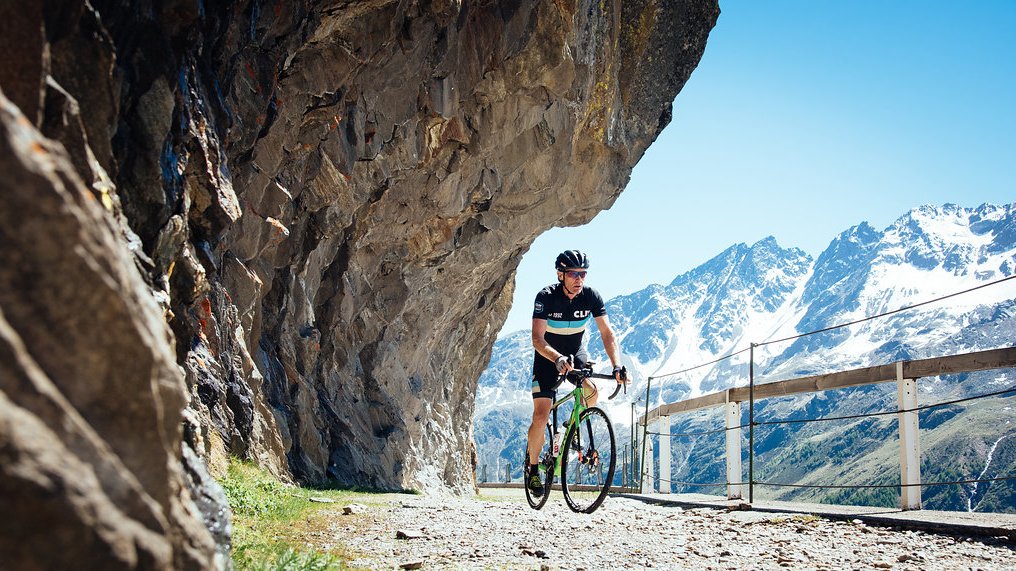In 1990, Gary Erickson was running a struggling bakery in Emeryville, California. He enjoyed baking—many of his recipes came from his mother—but had a hard time keeping his business afloat. He wanted to do right by his customers and employees and make a positive dent in the world, but he didn’t know how to create a strategic plan that would get him there—while allowing him to follow his twin passions: climbing and cycling. His philosophy on bike touring was similarly amorphous. Instead of burdening himself with gear and a careful plan, Erickson preferred to set out, often with his buddy Jay, with just a seat bag packed with essentials and an open mind. The two traveled all over the European Alps this way, exploring remote sections of road—pedaling and, in some case, even shouldering their bikes over Alpine passes. “We didn’t know where we were going to sleep at night or eat each day,” Erickson says. “But traveling light gave us freedom and exposed us to new people and experiences.”

One morning, back in California, the duo embarked on what they thought would be a 125-mile bike ride through the mountains east of San Francisco. The ride turned out to be 175 miles long, and all Erickson had for fuel was 6 energy bars. He had eaten five of them, but couldn’t stomach the thought of a sixth. “I was starving, and I knew I desperately needed to eat something,” recalls Erickson, “but I couldn’t bring myself to eat another bar,” he says. “It was a taste issue. I knew I could solve it, that I could make something that tasted—and worked—better.”
THE FOLLOWING YEAR, in 1991, Erickson moved into a crummy $300-a-month garage and got to work in his mom’s kitchen. “I got my mom involved because, first, she was the person who taught me how to bake and, second, I trusted her sense of taste to balance out my desire to make an all-natural energy bar with no butter, sugar, or oil,” Erickson says. Painstakingly tracking each recipe, he subjected his friends to new batches for the next six months. “For a while, the recipes kept getting further and further away from what you’d call food. Finally, after one failed batch, I decided to start over. I got out my mom’s classic oatmeal/chocolate-chip cookie recipe and used that as the foundation. My friends loved it.” That recipe would eventually become the basis for the original Clif Bar. A few months later, after a year and a half of trying to crack the all-natural, and still-tastes-good code, Erickson made his first sale to a bike shop. More bike shops signed on, and before long, his bakery had evolved into an energy bar company.
SO WHY DOES AN ENERGY BAR COMPANY inspired by an epic bike ride have climbing-themed branding? The answer: Erickson’s father, Clifford. “My dad turned me on to nature with trips to Yosemite, where we’d hike or ski,” Erickson says. “As a kid, we took these wonderful road trips with my uncle and cousins where we’d pack up the Pontiac and drive from national park to national park, camping for two days before moving on.”

Those camping trips as a child turned into climbing adventures as a young man. In 1982, he and a buddy scaled the face of Half Dome, in Yosemite Valley—a climb that ultimately inspired the now iconic packaging. “My friend Doug Gilmour, who designed the packaging, always saw me as a self-reliant climber,” Erickson says. “Part of my personality comes from those early trips with my dad.” On his father’s 66th birthday, Erickson told his dad that he was naming his new energy bar after him.
ERICKSON NOW HAD AN ENERGY BAR people liked and a company full of potential, but he still needed one more ingredient to make it a success: a business-savvy partner who shared his vision. He found that—and more—in Kit Crawford, a jazz dancer and performing artist. Crawford’s parents had raised her on homegrown, organic foods, which instilled in her a deep connection between the earth and what we eat. In an effort to get her attention, Erickson took modern dance lessons. “We were friends, and I wanted to be more than that,” he admits. “Then she married someone else.”

Fourteen years later, after Crawford’s first marriage ended, their romance finally blossomed. Together—their desks are now ten feet apart—they’ve slowly turned Clif into the company it is today. “When I developed Clif, I never thought of making a ton of money or an exit strategy,” he says. “I always took the long view.” As the company has grown, so has Crawford’s influence. “From how we took care of our employees to the organic ingredients we use, all those decisions came from Kit,” he says. Erickson credits Crawford’s direction for their decision to make employee health and happiness a priority, and create a workplace with an employee cafeteria that serves sustainably sourced foods and an on-site gym, yoga studio, and climbing wall. Ten years ago, Erickson and Crawford went one step further and created an employee stock ownership program. “Everyone thought Kit and I were nuts, but we quadrupled the size of Clif together,” says Erickson. Clif has ridden the energy bar boom to become one of the biggest independent players in the business. As the energy foods universe has expanded, so has Clif. Over the past two decades, they’ve launched the successful LUNA bars for women and a wide range of other products, including nut-butter filled bars, whey protein bars, and Z bars, a line of organic energy snacks for kids.
But until 2016, there was a missing piece. “We had deep relationships with the people who grew our ingredients. We shared our values with the employees at our headquarters, in Emeryville, California, but the bars were baked by someone else,” Erickson says.

That changed when Clif built its own commercial bakery from scratch, in Twin Falls, Idaho, employing nearly 300 people. Like Clif’s LEED Platinum headquarters in Emeryville, the new $90 million Twin Falls facility is a special building, designed around connecting people with nature through windows, skylights, stone walls, and indoor plants.
It’s all part of Clif Bar’s values of advocating for organic agriculture and doing what it can to improve our current food system and the lives of its employees. “Over the last ten years, Kit and I have set out to build a company and a culture that holds itself responsible to five bottom lines: our business, brands, employees, communities, and planet.”





